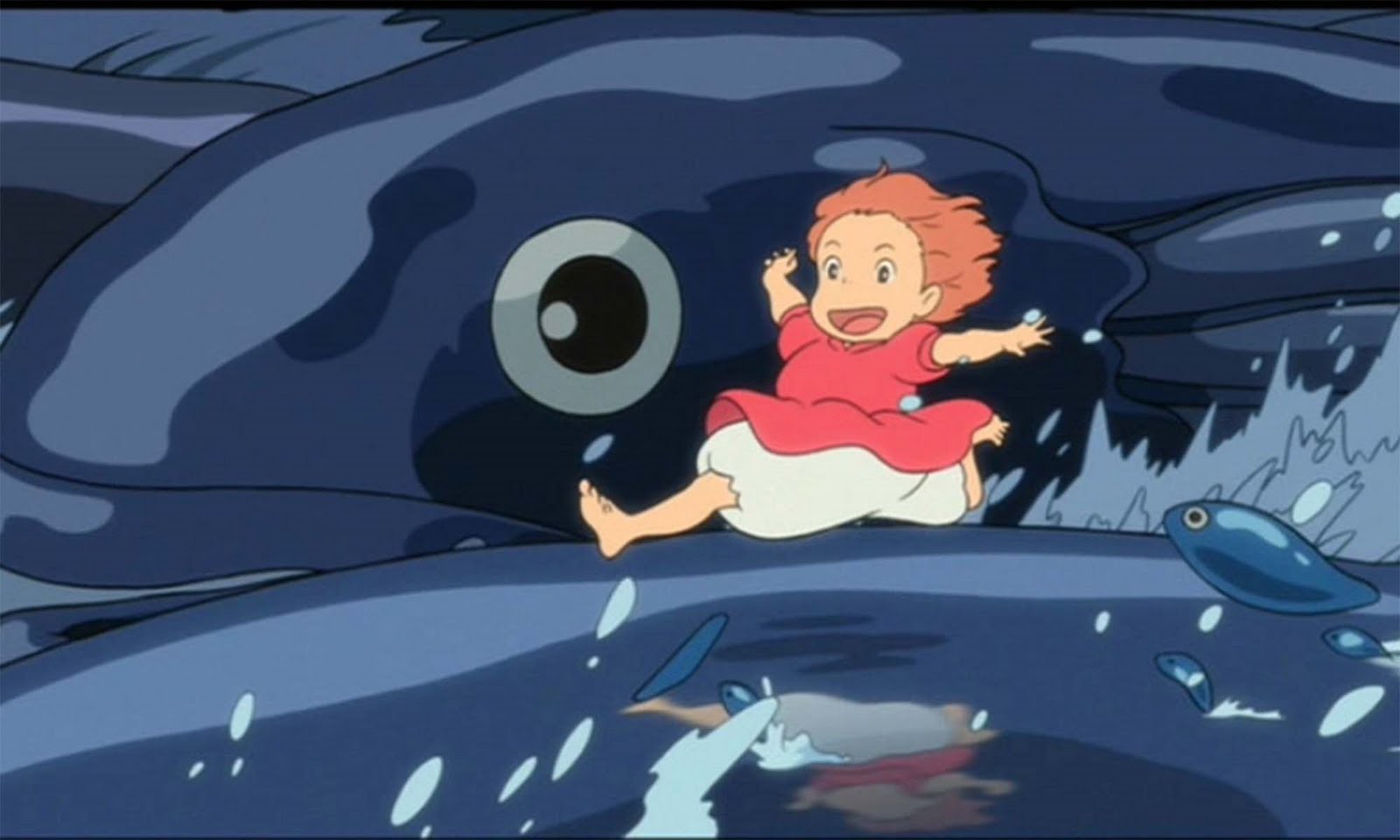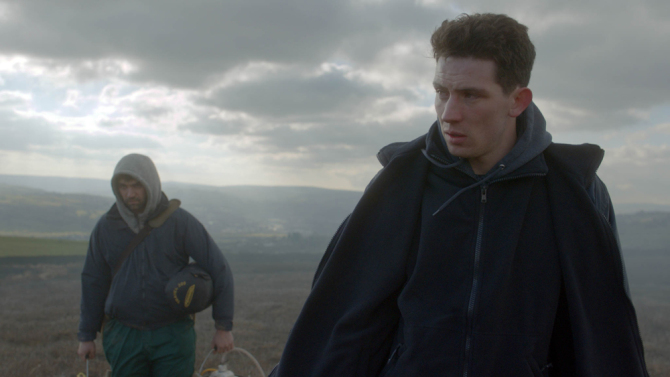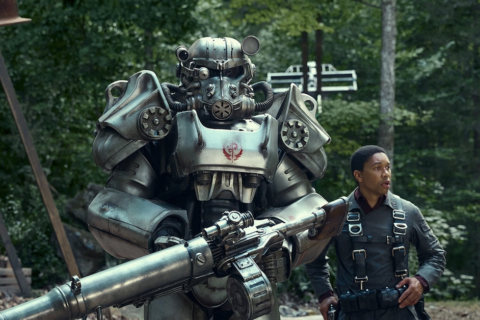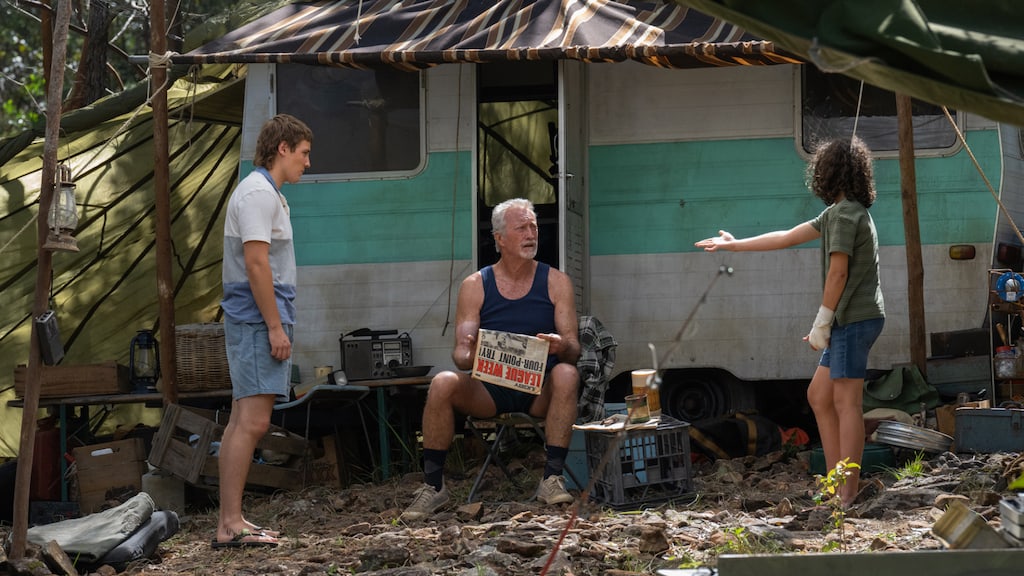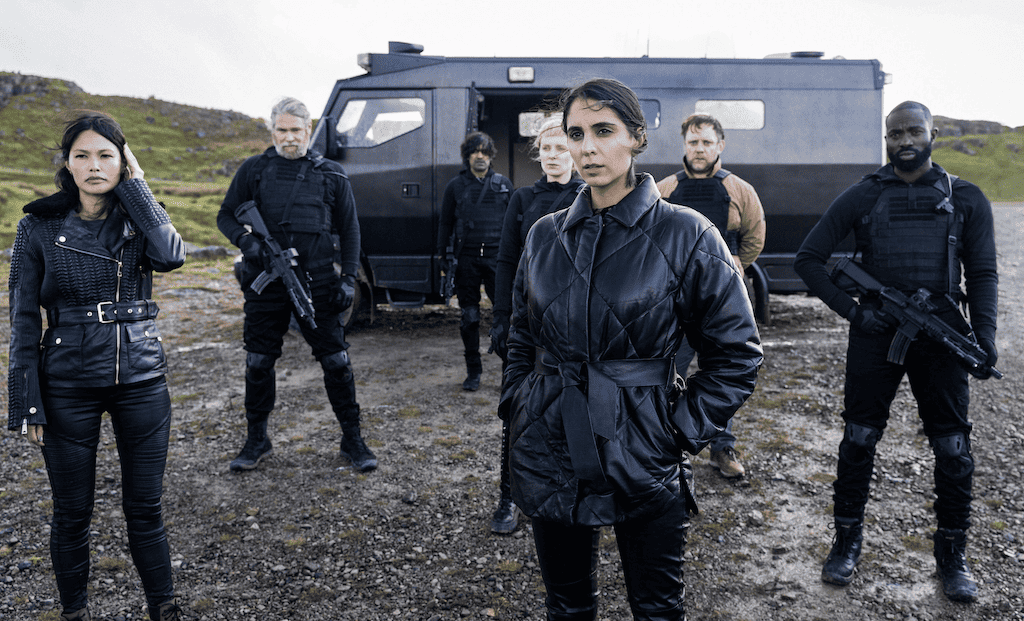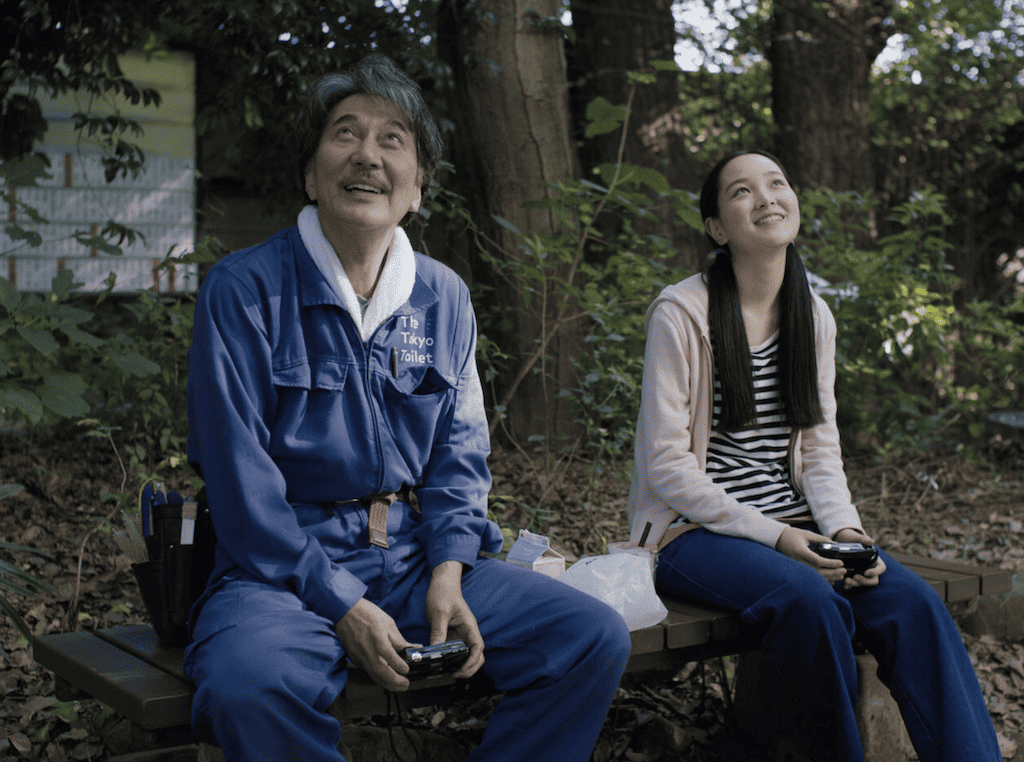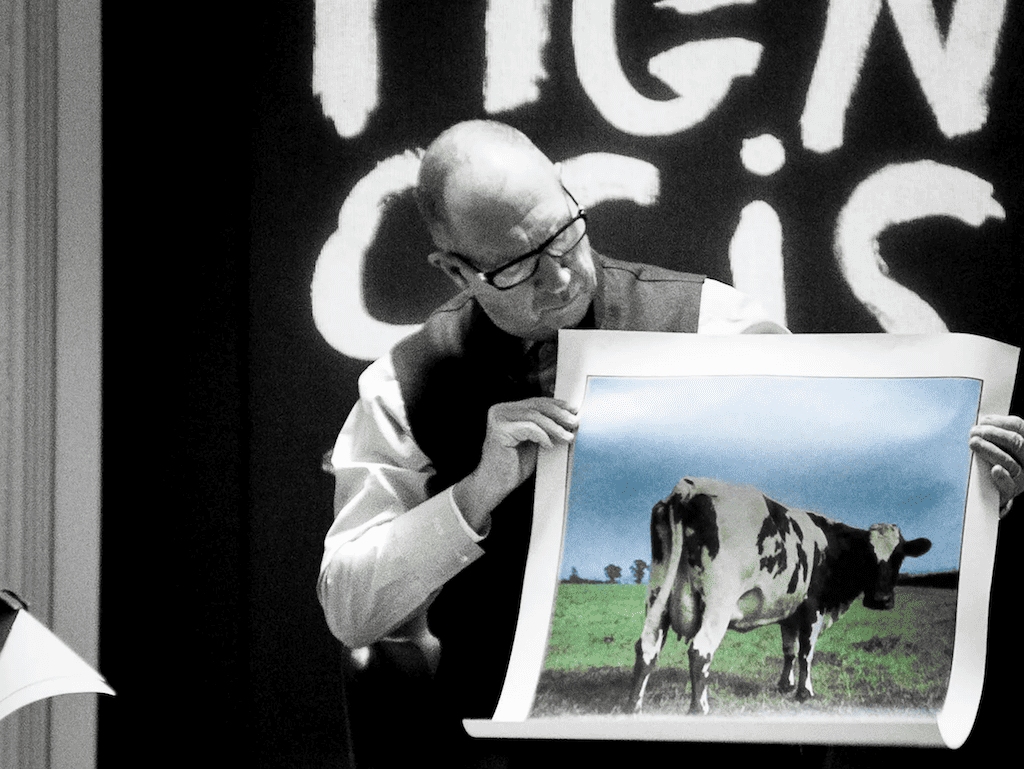SHELLEY SWEENEY loves the films of Hayao Miyazaki, and now, so do her two young boys. Here’s her tribute to the director and his Studio Ghibli, to mark a festival of his films on the big screen.
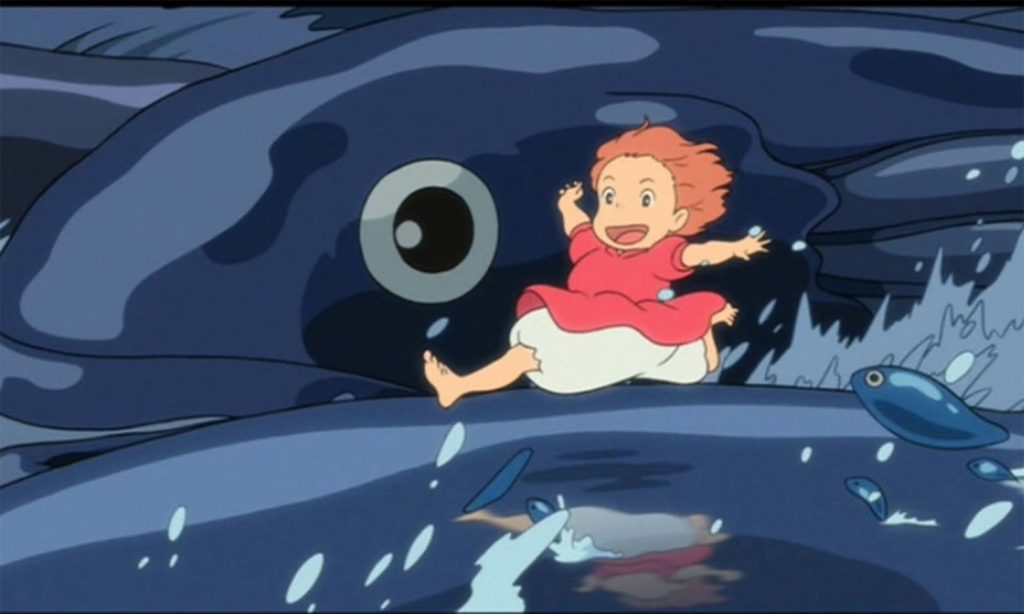 Spirited Away was my first Ghibli film. Some fan friends were envious that I was about to experience the Ghibli magic for the first time. Years later, it reminded me of how I felt when someone said they were going to start watching Breaking Bad. I had already binge-watched every season and there was sadly no way of going back down that rabbit hole. Spirited Away had me transfixed. I’ve been a Ghibli fan ever since.
Spirited Away was my first Ghibli film. Some fan friends were envious that I was about to experience the Ghibli magic for the first time. Years later, it reminded me of how I felt when someone said they were going to start watching Breaking Bad. I had already binge-watched every season and there was sadly no way of going back down that rabbit hole. Spirited Away had me transfixed. I’ve been a Ghibli fan ever since.
I watched Ponyo before having children and enjoyed the dubbed version with Tina Fey and Matt Damon voicing the parents of Sosuke, and Liam Neeson and Cate Blanchett chipping in as Ponyo’s parents. It’s usually a good sign when a bunch of well-known Hollywood names lend their voices to an international animated feature.
Ghibli writer/director/legend Hayao Miyazaki spent a couple of months staying in the picturesque seaside village of Tomonoura in the Setonaikai National Park in Japan in 2005. The village inspired the setting of Ponyo. Tomonoura is now a mecca for Ghibli tourism, and the locals sell Ghibli merchandise along with the local medicinal health tonic. Ponyo was animated by hand with a pastel watercolour technique that adds a magic of its own to an already magical tale. Miyazaki’s inspiration for the character of Sosuke came from his 5-year-old son.
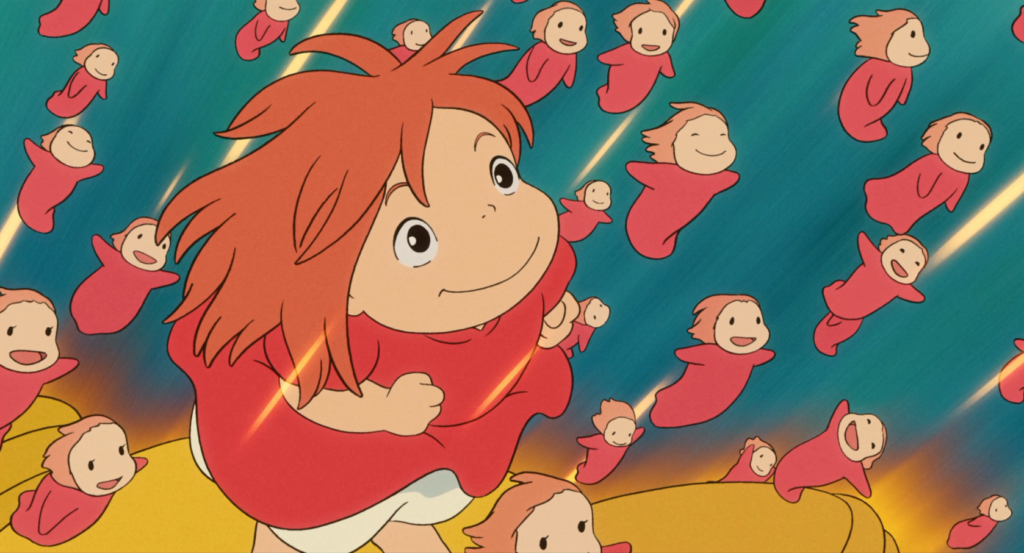 “I believe that children’s souls are the inheritors of historical memory from previous generations,” said Miyazaki. “It’s just that as they grow older and experience the everyday world, that memory sinks lower and lower. I feel I need to make a film that reaches down to that level. If I could do that I would die happy.”
“I believe that children’s souls are the inheritors of historical memory from previous generations,” said Miyazaki. “It’s just that as they grow older and experience the everyday world, that memory sinks lower and lower. I feel I need to make a film that reaches down to that level. If I could do that I would die happy.”
It’s no wonder then that Miyazaki had the daycare centre for his employee’s children built next door to the Studio Ghibli workshop, “for inspiration”.
I watched Ponyo for the second time with my son when he was four. Noticing the DVD on the shelf at the local library, I wondered if he might be ready for a Studio Ghibli film. I was really excited for him to see it but decided not to get my hopes up. After all, he was only four and had only been exposed to the Disney formula, which seeps into the subconscious expectations of all of us from childhood. It goes like this: a character feels unhappy, leaves home, finds friends who help them realise their dream via a magical perilous adventure where they defeat the villain, before happily ending up where they belong. It is worth noting that Disney has distributed many of the Studio Ghibli films worldwide. Miyazaki’s nickname is ‘The Japanese Walt Disney’. The American animation giant has embraced the magical world of Hayao Miyazaki. The plot of Ponyo is loosely based on The Little Mermaid. Disney adapted the Hans Christian Anderson story for screen in 1989 albeit with a Disney-style ending.
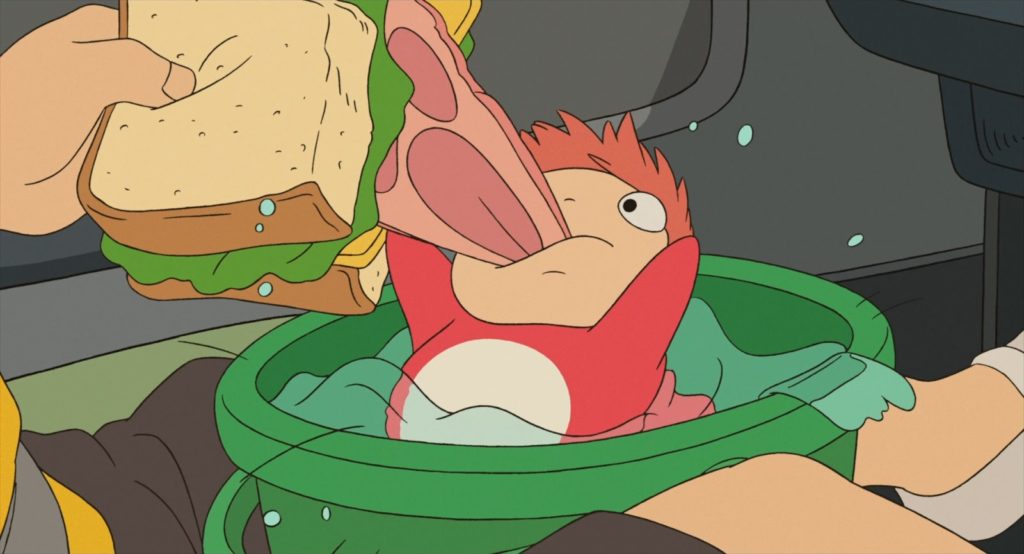 While some elements of the Disney formula are present in Ponyo, it goes a little bit more like this: Happy character innocently crosses the line between the real and magical world, and nature is thrown out of balance. To restore the balance of nature, someone must make a choice about which world they belong in. There is magic, friendship and perilous adventure. This formula is true of some of the most loveable Ghibli films – Spirited Away, The Cat Returns and Howl’s Moving Castle to name a few. Not so different from the Disney standard but very different at the same time. The magical world is wild, and unpredictable. The real world is simple and calm despite being full of raw, emotional characters. The real world represents adulthood from the point of view of a child. The magical world is childhood. This is the world that Ghibli’s innocent characters embrace, and this is where their hearts belong. Each character has something they love in the magical world, but it is inevitable for them that the real world awaits.
While some elements of the Disney formula are present in Ponyo, it goes a little bit more like this: Happy character innocently crosses the line between the real and magical world, and nature is thrown out of balance. To restore the balance of nature, someone must make a choice about which world they belong in. There is magic, friendship and perilous adventure. This formula is true of some of the most loveable Ghibli films – Spirited Away, The Cat Returns and Howl’s Moving Castle to name a few. Not so different from the Disney standard but very different at the same time. The magical world is wild, and unpredictable. The real world is simple and calm despite being full of raw, emotional characters. The real world represents adulthood from the point of view of a child. The magical world is childhood. This is the world that Ghibli’s innocent characters embrace, and this is where their hearts belong. Each character has something they love in the magical world, but it is inevitable for them that the real world awaits.
Miyazaki chooses to avoid obvious villains in his films. “The concept of portraying evil and then destroying it – I know this is considered mainstream, but I think it is rotten. This idea that whenever something evil happens someone particular can be blamed and punished for it, in life and in politics is hopeless.”
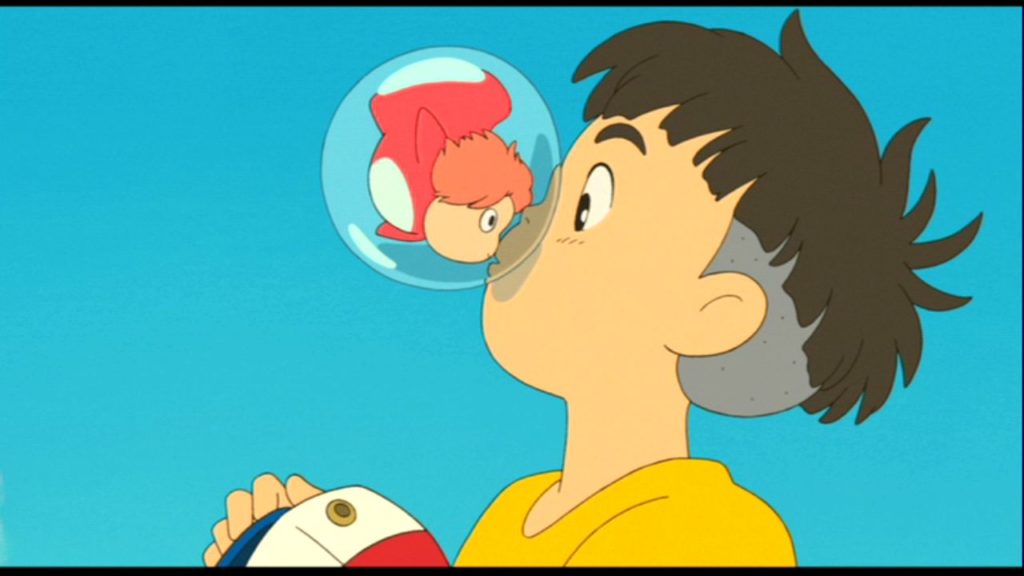 In Ponyo, five-year-old Sosuke crosses the line between worlds when he innocently saves a goldfish who has been caught in a glass jar on the seashore. Sosuke smashes the jar and decides to keep the funny looking fish, who has an almost human face. He cuts his finger on the glass and she licks it, healing it instantly. He puts her in a bucket of water, names her Ponyo and promises to protect her.
In Ponyo, five-year-old Sosuke crosses the line between worlds when he innocently saves a goldfish who has been caught in a glass jar on the seashore. Sosuke smashes the jar and decides to keep the funny looking fish, who has an almost human face. He cuts his finger on the glass and she licks it, healing it instantly. He puts her in a bucket of water, names her Ponyo and promises to protect her.
My four-year-old son was tentative to watch the film until he saw that Sosuke and Ponyo were around his age. He was hooked, even through the scary bits when he hid his head under my arm. For weeks after the film, we found ourselves singing the theme song. “Ponyo Ponyo Ponyo fishy in the sea. Tiny little fishy who could you really be? Ponyo Ponyo Ponyo magic sets you free. Oh she’s a little girl with a round tummy.”
Eighteen months later, we’re watching Ponyo again. This time my eldest son is almost six and my youngest has just turned three. My expectations for my younger son and his attention span are not high, but he surprises me and sits through the whole film. It’s entirely plausible to him that a little fish might fall in love with a boy and turn herself into a human girl.
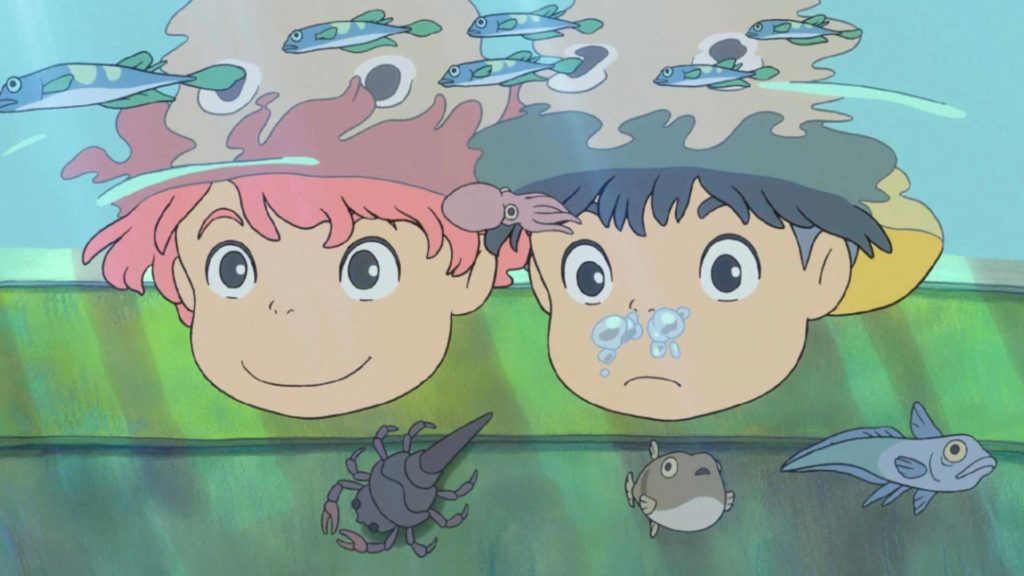 It’s the raw emotion of Ponyo that my three-year-old son responds to the most. He is himself a raw little character, full of unabashed enthusiasm for life. He gives hugs so tight they could strangle a cobra, but he loves with his whole heart, just like Ponyo and Sosuke do. When Ponyo hugs Sosuke, my son laughs. He recognises himself in Ponyo almost knocking Sosuke over with an unexpected embrace. My younger son loves to do this to his big brother. He will sneak up on him and give him a huge hug while laughing like a pirate.
It’s the raw emotion of Ponyo that my three-year-old son responds to the most. He is himself a raw little character, full of unabashed enthusiasm for life. He gives hugs so tight they could strangle a cobra, but he loves with his whole heart, just like Ponyo and Sosuke do. When Ponyo hugs Sosuke, my son laughs. He recognises himself in Ponyo almost knocking Sosuke over with an unexpected embrace. My younger son loves to do this to his big brother. He will sneak up on him and give him a huge hug while laughing like a pirate.
Sosuke’s mother works in the local retirement home next to his school. Sosuke takes Ponyo to school and introduces her to some of the ladies at the home on the way. One of them gives him a warning: that fish with human faces cause tsunamis. Of course, everyone laughs at this suggestion. We know better though!
Ponyo’s father Fujimoto is a wizard who is more than a little bit creepy. He searches frantically for Ponyo. Sosuke takes her down to the sea and Fujimoto’s wave spirits take her back. Ponyo fights with Fujimoto and declares her love for Sosuke. The perilous adventure begins.
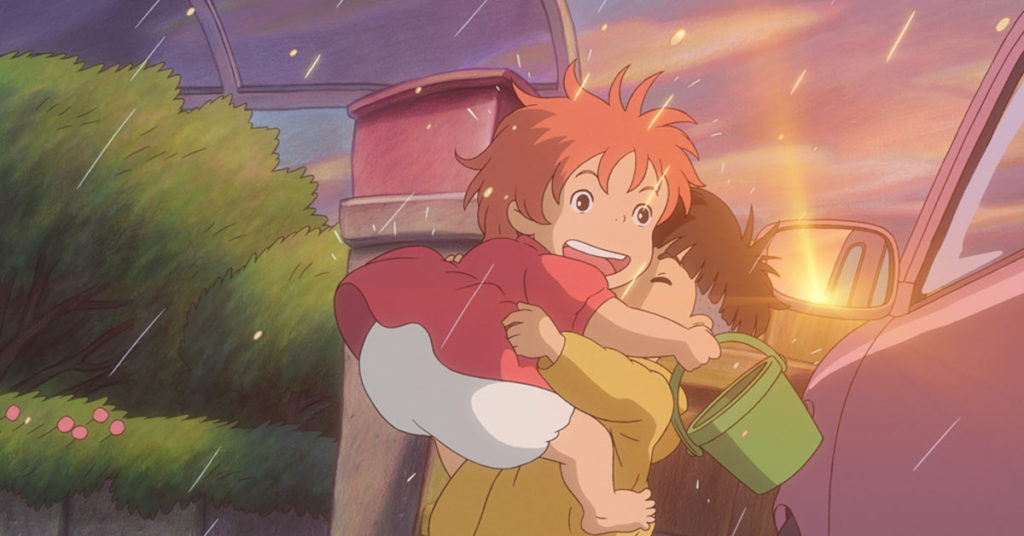 Both of my boys laugh out loud watching the transformed Ponyo getting used to being human. She runs around Sosuke’s house and makes a series of rookie toddler mistakes. She runs into a glass door, eats food that is too hot, then finally manages to eat some of the food only to fall asleep in it.
Both of my boys laugh out loud watching the transformed Ponyo getting used to being human. She runs around Sosuke’s house and makes a series of rookie toddler mistakes. She runs into a glass door, eats food that is too hot, then finally manages to eat some of the food only to fall asleep in it.
At this point, the fishing village is flooded and Ponyo has just used her powers to make a toy boat big enough for her and Sosuke to ride on. It is an adventure, like someone hearing the story of Alice In Wonderland for the first time. What? Now she’s small? No wait, she’s tall?! This is crazy, constantly changing and it never stops. Hang on a minute! Doesn’t that last sentence accurately describe the energy of young children? The best children’s stories have this quality, and it’s no surprise that children love them for it. They can relate. For very young children, their concepts of reality are still forming. They don’t know all the rules yet. Magic, much like Father Christmas and the Easter Bunny, might just be real.
With the magical Ponyo on land, nature is seriously out of balance. Overnight the moon has moved too close to the earth and the rising tide has put the entire village under water. Just as well then that it is a coastal town and everyone seems content to spend the day having picnics on their boats. Sosuke’s parents though are missing. His father is lost at sea on his fishing boat and his mother disappeared after going to help the residents at the retirement home. To add to their troubles, Ponyo’s parents have decided to test her resolve to be human. If she can prove her love for S?suke then the balance of nature will be restored.
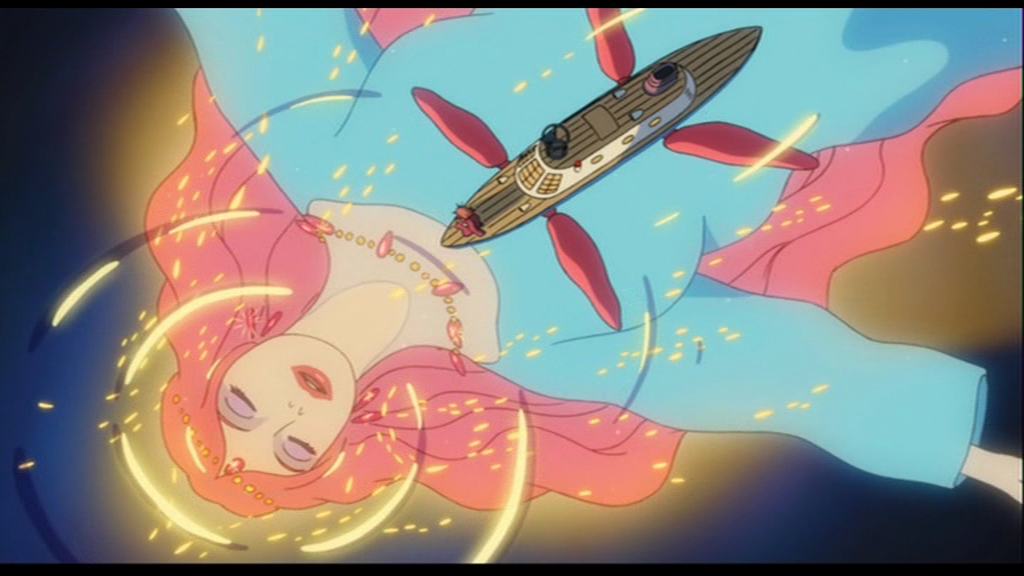 Ponyo is fundamentally a film about love and friendship. For Miyazaki though, the film gives more of a nod to the uncertainty of the times we live in. We don’t feel confident about the future of our environment and we know that things are out of balance. Sosuke finds Ponyo trapped in an old jar on a shoreline littered with rubbish. It’s a beautiful coastline polluted by humans who take it for granted.
Ponyo is fundamentally a film about love and friendship. For Miyazaki though, the film gives more of a nod to the uncertainty of the times we live in. We don’t feel confident about the future of our environment and we know that things are out of balance. Sosuke finds Ponyo trapped in an old jar on a shoreline littered with rubbish. It’s a beautiful coastline polluted by humans who take it for granted.
In 2014, after 22 Studio Ghibli films, Miyazaki announced his retirement. Earlier this year, 76-year-old Miyazaki announced his un-retirement from directing. He is currently working on extending a short film that he was making for the Studio Ghibli museum called Boro The Caterpillar.
* Studio Ghibli Film Festival in selected cinemas nationwide from 24th August.
https://www.youtube.com/watch?v=bskgNOXbdiE

